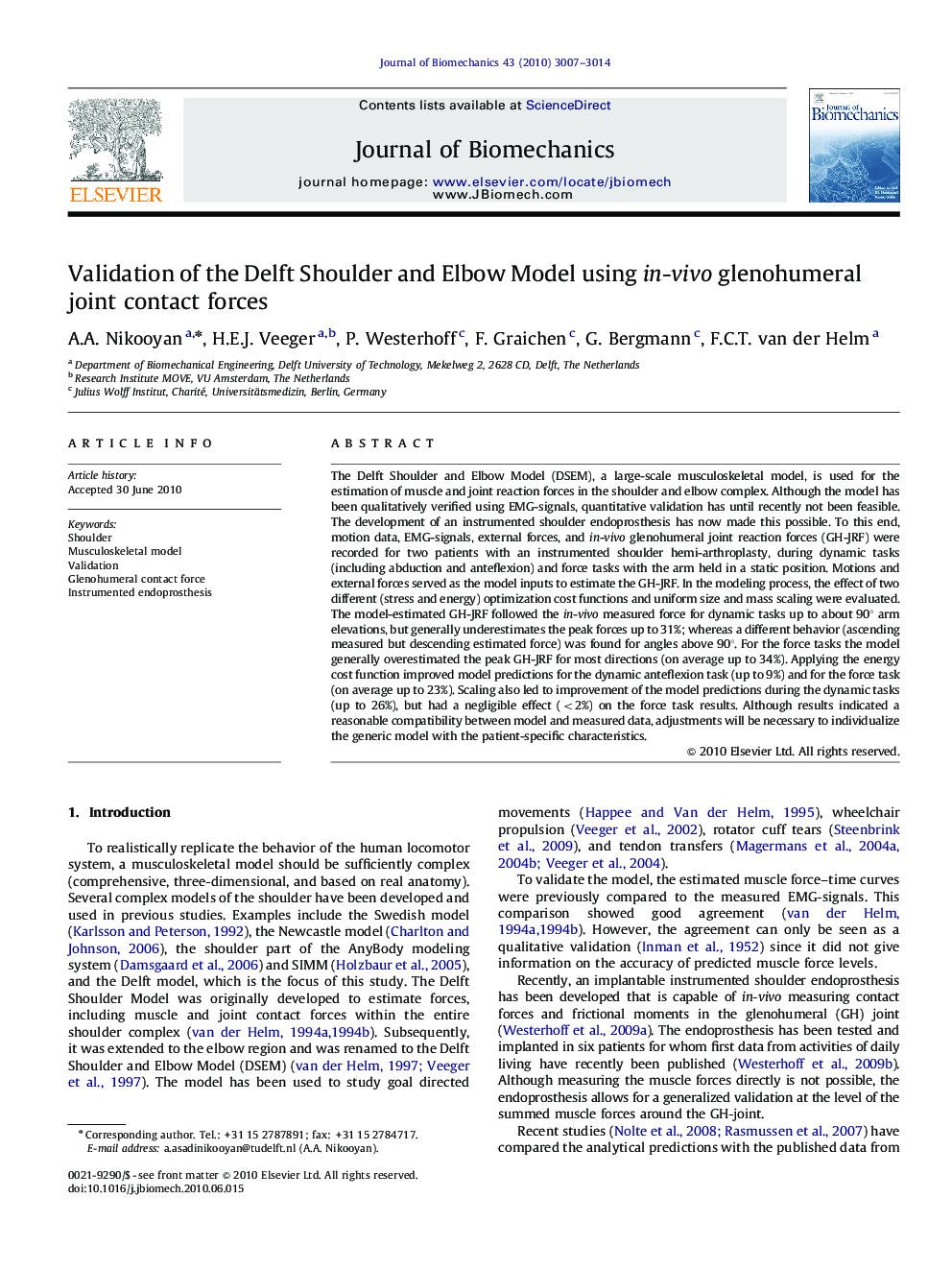| Article ID | Journal | Published Year | Pages | File Type |
|---|---|---|---|---|
| 872475 | Journal of Biomechanics | 2010 | 8 Pages |
The Delft Shoulder and Elbow Model (DSEM), a large-scale musculoskeletal model, is used for the estimation of muscle and joint reaction forces in the shoulder and elbow complex. Although the model has been qualitatively verified using EMG-signals, quantitative validation has until recently not been feasible. The development of an instrumented shoulder endoprosthesis has now made this possible. To this end, motion data, EMG-signals, external forces, and in-vivo glenohumeral joint reaction forces (GH-JRF) were recorded for two patients with an instrumented shoulder hemi-arthroplasty, during dynamic tasks (including abduction and anteflexion) and force tasks with the arm held in a static position. Motions and external forces served as the model inputs to estimate the GH-JRF. In the modeling process, the effect of two different (stress and energy) optimization cost functions and uniform size and mass scaling were evaluated. The model-estimated GH-JRF followed the in-vivo measured force for dynamic tasks up to about 90° arm elevations, but generally underestimates the peak forces up to 31%; whereas a different behavior (ascending measured but descending estimated force) was found for angles above 90°. For the force tasks the model generally overestimated the peak GH-JRF for most directions (on average up to 34%). Applying the energy cost function improved model predictions for the dynamic anteflexion task (up to 9%) and for the force task (on average up to 23%). Scaling also led to improvement of the model predictions during the dynamic tasks (up to 26%), but had a negligible effect (<2%) on the force task results. Although results indicated a reasonable compatibility between model and measured data, adjustments will be necessary to individualize the generic model with the patient-specific characteristics.
